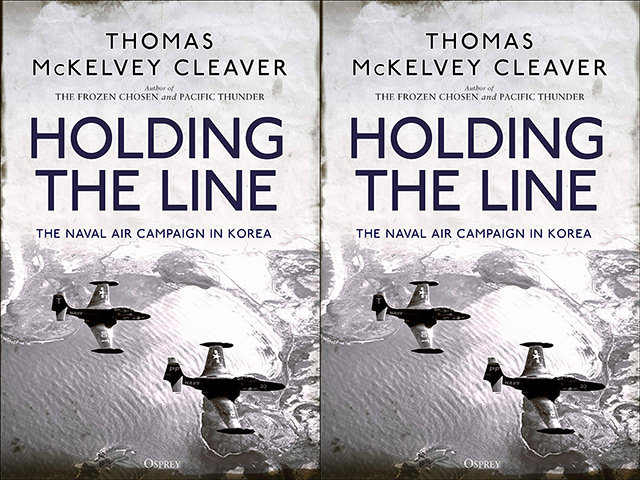Holding the Line: The Naval Air Campaign in Korea
Book review

Holding the Line: The Naval Air Campaign in Korea, Thomas McKelvey Cleaver, Osprey, 2021, 320p, £14-99. ISBN 9781472831736.
This provides a very thorough introduction to how the politics behind military strategy operates in the United States. What we find, with extraordinary parallels with our own time, is that after the Second World War the US scaled down its military assets on an extraordinary scale. The rationale behind the political process was that key figures in the US believed that the atomic bomb would be at the heart of their future strategy and that their dominant naval role could be dramatically reduced. Politics and economics had not engaged with military strategists and so extraordinary cuts were implemented. When it became apparent that the USSR had also developed its own atomic bomb, it began to become apparent that the politico-economic approach was being undermined.
Events in Korea the led to a great deal of re-armament in the US because it became apparent that air power would need much more naval support than had been intended. As Cleaver indicates, from 1950 it became the norm of US foreign policy that adequate aircraft carrier capacity would be a cornerstone of foreign policy.
Involvement in the UN mission in Korea led to a realistic refocussing of US policy, and we see, even today, that the strategic positioning and movement of aircraft carriers is a central feature of the US approach to achieving foreign policy outcomes.
This book does make a very significant contribution to understanding the wider political perspective, whilst simultaneously giving a clear narrative of how the Korean campaign unfolded.

